Data Warehouse Tutorial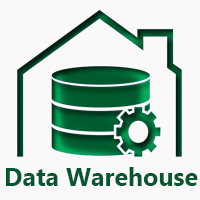
Data Warehouse is a relational database management system (RDBMS) construct to meet the requirement of transaction processing systems. It can be loosely described as any centralized data repository which can be queried for business benefits. It is a database that stores information oriented to satisfy decision-making requests. It is a group of decision support technologies, targets to enabling the knowledge worker (executive, manager, and analyst) to make superior and higher decisions. So, Data Warehousing support architectures and tool for business executives to systematically organize, understand and use their information to make strategic decisions. Data Warehouse environment contains an extraction, transportation, and loading (ETL) solution, an online analytical processing (OLAP) engine, customer analysis tools, and other applications that handle the process of gathering information and delivering it to business users. What is a Data Warehouse?A Data Warehouse (DW) is a relational database that is designed for query and analysis rather than transaction processing. It includes historical data derived from transaction data from single and multiple sources. A Data Warehouse provides integrated, enterprise-wide, historical data and focuses on providing support for decision-makers for data modeling and analysis. A Data Warehouse is a group of data specific to the entire organization, not only to a particular group of users. It is not used for daily operations and transaction processing but used for making decisions. A Data Warehouse can be viewed as a data system with the following attributes:
"Data Warehouse is a subject-oriented, integrated, and time-variant store of information in support of management's decisions." Characteristics of Data Warehouse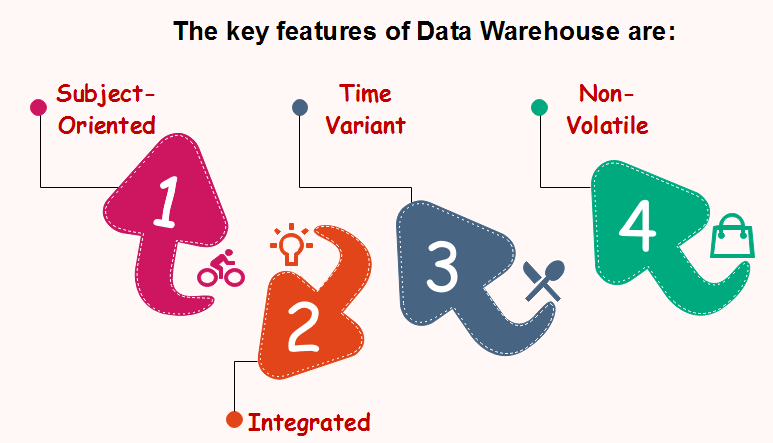
Subject-OrientedA data warehouse target on the modeling and analysis of data for decision-makers. Therefore, data warehouses typically provide a concise and straightforward view around a particular subject, such as customer, product, or sales, instead of the global organization's ongoing operations. This is done by excluding data that are not useful concerning the subject and including all data needed by the users to understand the subject. 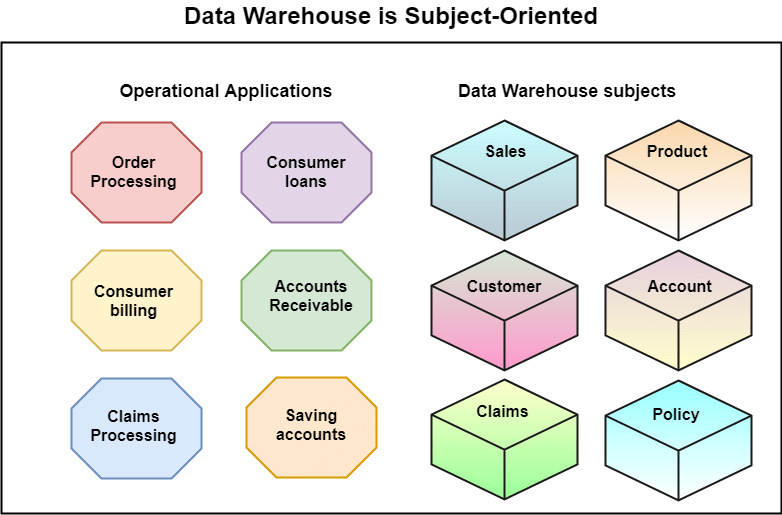
IntegratedA data warehouse integrates various heterogeneous data sources like RDBMS, flat files, and online transaction records. It requires performing data cleaning and integration during data warehousing to ensure consistency in naming conventions, attributes types, etc., among different data sources. 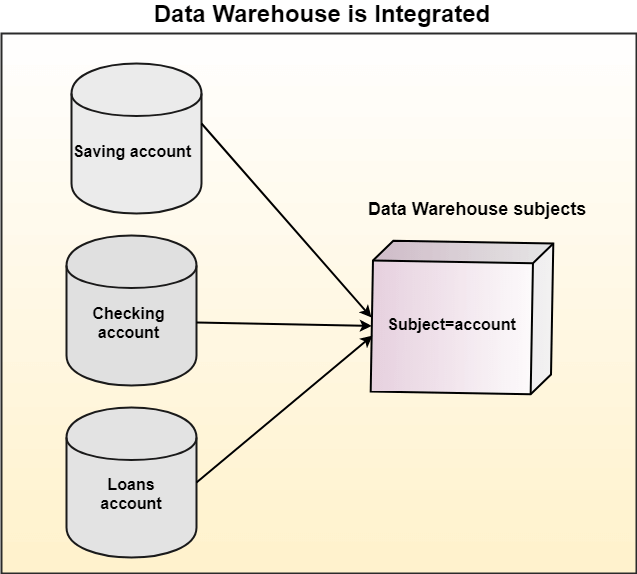
Time-VariantHistorical information is kept in a data warehouse. For example, one can retrieve files from 3 months, 6 months, 12 months, or even previous data from a data warehouse. These variations with a transactions system, where often only the most current file is kept. 
Non-VolatileThe data warehouse is a physically separate data storage, which is transformed from the source operational RDBMS. The operational updates of data do not occur in the data warehouse, i.e., update, insert, and delete operations are not performed. It usually requires only two procedures in data accessing: Initial loading of data and access to data. Therefore, the DW does not require transaction processing, recovery, and concurrency capabilities, which allows for substantial speedup of data retrieval. Non-Volatile defines that once entered into the warehouse, and data should not change. 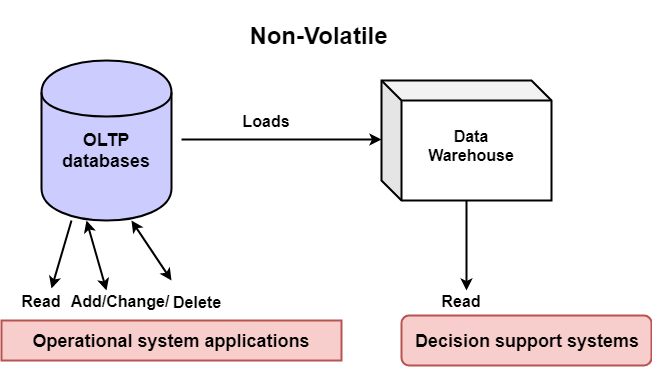
History of Data WarehouseThe idea of data warehousing came to the late 1980's when IBM researchers Barry Devlin and Paul Murphy established the "Business Data Warehouse." In essence, the data warehousing idea was planned to support an architectural model for the flow of information from the operational system to decisional support environments. The concept attempt to address the various problems associated with the flow, mainly the high costs associated with it. In the absence of data warehousing architecture, a vast amount of space was required to support multiple decision support environments. In large corporations, it was ordinary for various decision support environments to operate independently. Goals of Data Warehousing
Need for Data WarehouseData Warehouse is needed for the following reasons: 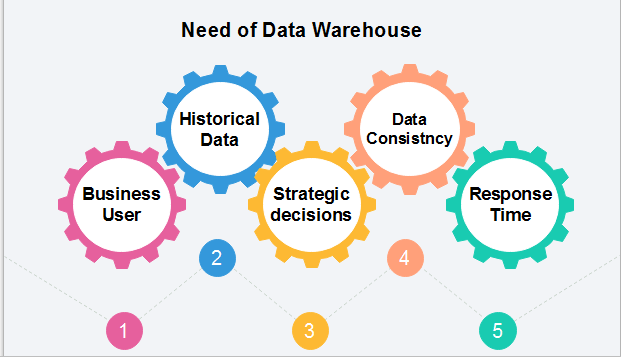
Benefits of Data Warehouse
PrerequisitesBefore learning about Data Warehouse, you must have the fundamental knowledge of basic database concepts such as schema, ER model, structured query language, etc. AudienceThis tutorial will help computer science students to understand the basic-to-advanced concepts associated with data warehousing. ProblemsWe assure that you will not find any problem with this Data Warehouse Tutorial. But if there is any mistake, please post the problem in the contact form.
Next TopicData Warehouse Components
|
 For Videos Join Our Youtube Channel: Join Now
For Videos Join Our Youtube Channel: Join Now
Feedback
- Send your Feedback to [email protected]
Help Others, Please Share










